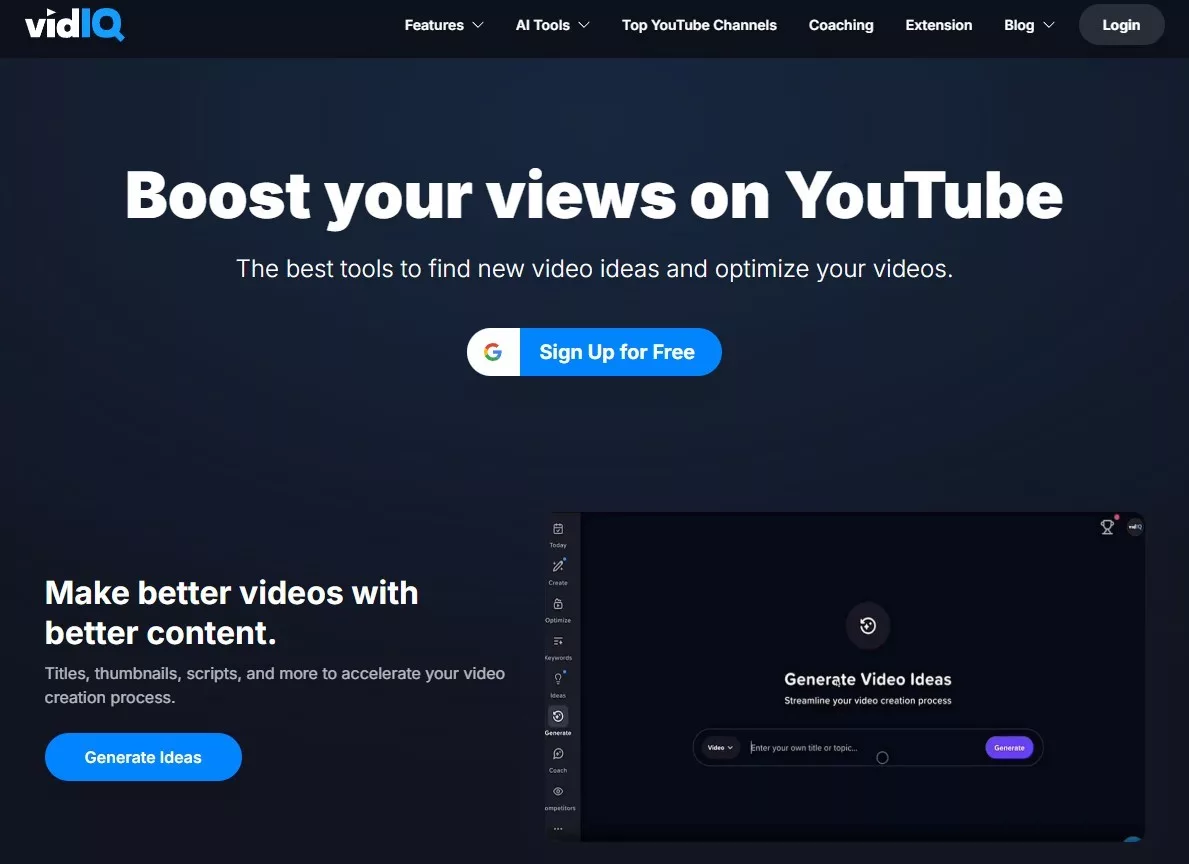Hello, community! While some modern traffic sources raise concerns about long-term sustainability, and even search engine organic traffic is being pushed out by AI, some platforms remain as relevant as ever. A great example is YouTube, which still has a massive and active audience — even with TikTok exploding in popularity.
Before we get into how to create a YouTube channel and generate views, we recommend checking out our piece on how to warm up your account with AI. Super useful!
Analytics First: How to Build a Successful YouTube Channel
Before diving in, we need a solid analysis:
- The niche you’re targeting. Your videos need to have a theme — and it’s obvious that others are making similar videos already. That gives you plenty of material for analysis.
- What the audience actually wants. Who watches your competitors’ videos, why do they watch them, and what problems are they trying to solve?
It’s often easier to start with the second point. You can align what the audience needs with what you can deliver. We’ll come back to this shortly.
Why Analyze Competitors?
You can find competitor channels manually or through analytics tools — even specialized spy services. But why bother?
First, it helps you go deeper into the niche, understand how it works, what’s interesting, and what gets ignored. Second, you’ll be able to better evaluate your project’s potential if it succeeds.
And lastly — topics. This is huge early on to get your first views. Trending topics can bring traffic even if you don’t have subscribers yet.
By analyzing video topics, you can also spot what’s currently going viral. Just use the upload date filter. A video with tons of views from 3 years ago isn’t trending — it’s just evergreen.
Focus only on recent, high-performing videos — those uploaded in the past month. That gives you a pretty accurate idea of what your first few videos should be about.
You can also use vidIQ tools to generate content ideas and access stats — like views per hour, which is key for identifying viral potential.

The tool’s also useful for other tasks, alongside other apps you should absolutely be using to make your analysis more objective and valuable.
Understanding Audience Demand
Only content that meets the viewer’s need becomes popular — or, more “scientifically,” solves their pain points.
That “pain” = their search queries. And figuring those out is simple. Use tools like SerpStat, or Google Trends if you’re trying to save budget.
Add to that trending topics. These represent even broader demand — not just from your core audience, but from a wider group. Seasonal trends deserve special attention too, and can be adapted to fit your niche.
Creating Content for Your Channel
Once the planning stage is done — actually, no, we’re still technically planning — but now with more creative input. You’ll need to think about scripts, branding, and channel setup.
Luckily, most of this can be outsourced to AI. Generative models can develop full content concepts. Even teaser previews generated by AI are becoming the norm.
Same goes for scripts. You can study the structure of top-performing videos, identify what keeps viewers engaged, and build your own from there. Or gather structure points from several channels and feed them into something like ChatGPT to build a solid video outline. Result:
- You barely have to think — AI handles the analysis.
- You can process a huge amount of data in just a few clicks.
- With the right prompts, you’ll easily create a script that’s built for recommendations.
You can even set the tone for your script from the start. Just tell ChatGPT who you are, your voice, how you talk to your audience, etc. We suggest analyzing script examples and selecting strong hooks for intros, top facts for the middle, and sharp takeaways at the end. Boom — you and the “robot” have crafted a killer video.
How to Promote Your YouTube Videos from Day One
Now comes promotion. And it starts the moment you hit publish. One of the key elements here is the video description — it should include keywords that match the viewer’s pain points and search intent: “RTX5080 review,” “how to build a beast PC on a budget,” “what to feed pigs when they won’t eat,” etc.
You should approach descriptions just like SEO copy. Don’t forget — YouTube is still a Google product.
And above all — create quality content. Especially in the early stages. Your initial stats will serve as the foundation later on. YouTube’s algorithm looks closely at views, engagement, bounce rate, and more. If the platform sees users are interested, it’ll recommend your video to the next person too.
Conclusion
Getting YouTube views in 2025 is still tough — competition is wild. But if you approach it not just creatively but analytically, you can build an excellent traffic source to drive users to top affiliate offers.
Would you invest your time and budget into launching a YouTube channel in 2025? Share your thoughts in our Telegram community — where you’ll always find guidance in the right direction!
With respect, your Geek!
